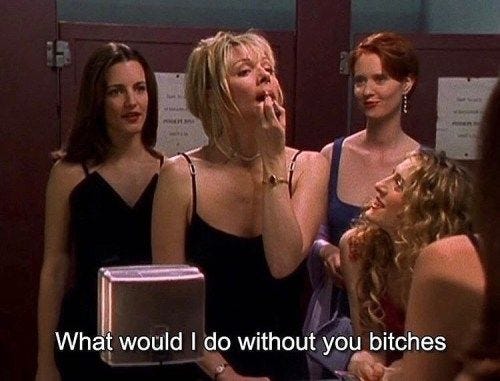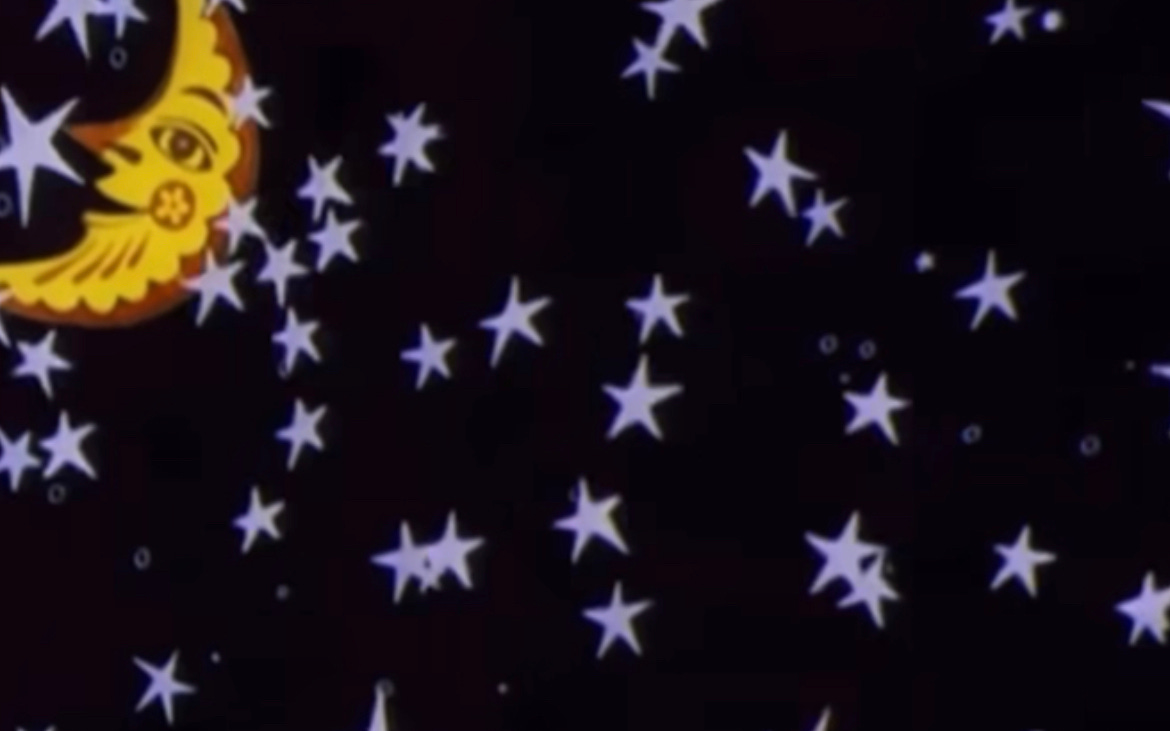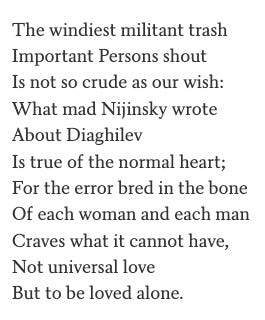Sex and the Temperaments
Recently, I’ve started watching Sex and the City for the first time and, as always, am tracing it back to astrology. They’ve truly made a compelling foursome, women who seem like actual friends and while also embodying a different type. Luckily, we have temperament to understand the broadest stokes of a person’s being. Temperament coming from the Latin temperamentum meaning “correct mixture”. It refers to the ideal balancing of hot, cold, wet and dry. Usually, we tend towards an excess of one over the other, i.e. hot over cold; wet over dry. Temperament is our inherent stamp, our character, bodily state and subsequent imbalances, different than personality because it is not shaped by external factors; children born of the same parents in the same environment will naturally have different temperaments.
There are four temperaments, each corresponding to a different combination and element. Sanguines, for example are mostly hot and wet and correspond to the air element. Melancholics are cold and dry and correspond with earth. Usually, sitcoms and stories involving four main characters usually have an even representation of each temperament. Here’s my breakdown of the Sex and the City women:
Carrie: Melancholic: I always associate melancholics with deep thought and analysis and Carrie makes her living as a writer. Her pensive thoughts narrate and make meaning out of the plights of the rest of the crew. She often struggles with finding love and clings to the wrong dudes (melancholic, being cold and dry, tends to be stubborn and hard to move). She finds herself in contemplative solitude but would rather be able to have more fun; life brings her back down to earth.
Miranda: Choleric: Even her red hair gives away her connection to the fiery hot and dry temperament. She speaks quickly and harshly, and makes snap decisions, all indicative of the impulsive nature of the fire sparking and then burning out just as quickly. She’s extremely career oriented and successful at what she does, belying cholerics’ extreme ambition and focus. She also has trouble being too picky with men, much to the detriment of the golden retriever dude patiently waiting for her to wake up.
Charlotte: Phlegmatic (Water); Charlotte is dying to be a kept woman; phlegmatics can “aim for the status quo,” in Dorian Gieseler Greenbaum’s words, and she struggles with ignoring glaring issues in men in hopes it goes away and they can be happily ever after (avoidance being another phlegmatic trait). But mostly, she’s content to do the same thing for the rest of her life, finding satisfaction in simple things. She prefers being demure and not making a scene, classic go with the flow phlegmatic quality. She also loves planning and organizing things, and phelgmatic, being cold, makes them more contemplative.
Samanantha: Sanguine (Air): Samantha is carefree in a way Carrie can’t attain; she has many partners, connecting easily, just like the hot and wet Sanguines tend to do, but gets over men like tissues. She’s always a the life of a party, perfect for the sociable, fun-loving temperament, and literally plans parties for a living. She’s an excellent people person and loves to try new things: places, restaurants, people, matching Sanguine’s love for novelty. She keeps her finger on the pulse and is way more liberated about everchanging sex and gender norms than her friends.
Try it with other foursomes! Seinfeld, New Girl, Wizard of Oz, King of the Hill, and try to match one to each.
Dance of Sun and Moon
I’ve been watching Austin Coppock’s lecture on Planetary Triplets, or when not just three planets are in combination in a birth chart, usually through conjunction or opposition (i.e. Mars and Mercury in Taurus opposite Jupiter in Scorpio or Mars, Moon and Sun in Pisces). Though I’m learning plenty, lately I’ve been thinking about the differences between how Austin describes combinations with the Sun and those with the Moon, our two Luminaries.
For example, for combinations of Saturn, Mars the Sun, he lists an inner toughness and patience, coupled with great personal ambition and potential toiling to high places. Conversely, Austin describes a Saturn, Mars and the Moon combination as “being stuck in the bad place”. It can describe hardship for the mother and a feeling of vulnerability when entering the world. While the Solar combination relates to the struggle to aspiration coupled with certain inner qualities, the Lunar one affects one more tangibly— their literal place.
As the two Luminaries, the Sun and Moon are the source of light and life. The Sun warms and illuminates, allowing life on earth and a center around which we orbit. The Moon, closest to the earth, is what begins all things and allows growth and physical manifestation. But the above exploration helped me realize a difference between Solar existence and Lunar. Coppock literally describes planets impacting the Moon as that which impacts your physical situation or what actually befalls you. The Sun, on the other hand, is how we see ourselves or what we define ourselves by. There’s an aspirational quality to the Sun, always lifting us up or towards our highest aspirations.
The Moon is our literal fortune; situations, events, happenings, thing. But the Moon is also emotions, mystery, magic. We tend to want to cling to or personalize our emotions, make them into something inherent or true about us. But the Moon also rules common things; one of my favorite practices handed down by my Zen teachers is that whatever I am going through, I assure myself “This is normal”— chances are, plenty have been exactly where I am.
What if we saw our emotions, especially the difficult or unruly ones, not as indicative of our character or lack of control, but simply situations we find ourselves, temporary lodgings that need to be dwelled in but will disappear as if they were never there. There’s an alchemy that takes place when we let our experiences flow through us, accepting exactly where we are. Rather than wishing we were something we’re not, we can use what we already heave to reach our aspirations, the Solar part of the equation. The Moon assures us we can’t be our Solar ideal all the time, but there is so much magic in witnessing our shifts. That’s what I love about the Moon; she exists in all mundane, overlooked things but also the mystery inherent within.
So take your time and think: Look at your Sun and Moon placements— its house, sign, decan if that works for you— and consider what stories they tell you about physical circumstance and substance versus identity and aspiration. What is the difference between your ideals and your actual and how can you honor both?
For now, I leave you with my one of my favorite poetry excerpts, a good contemplation this Mars-Venus in Leo Season:
- W.H. Auden, “September 1st, 1939”
Until next week,
Love,
Chloe







